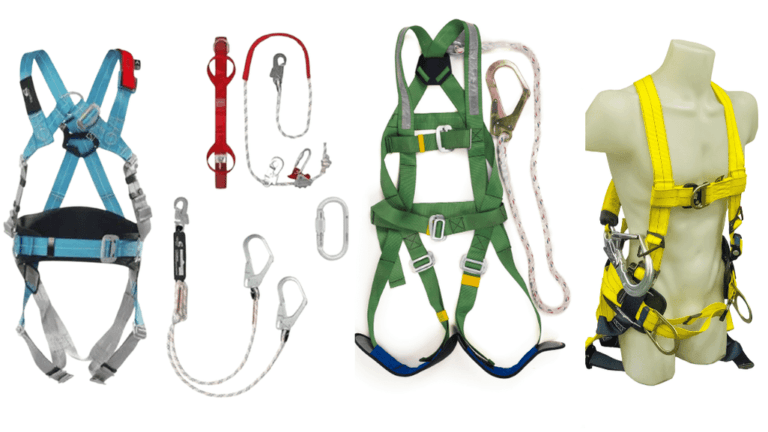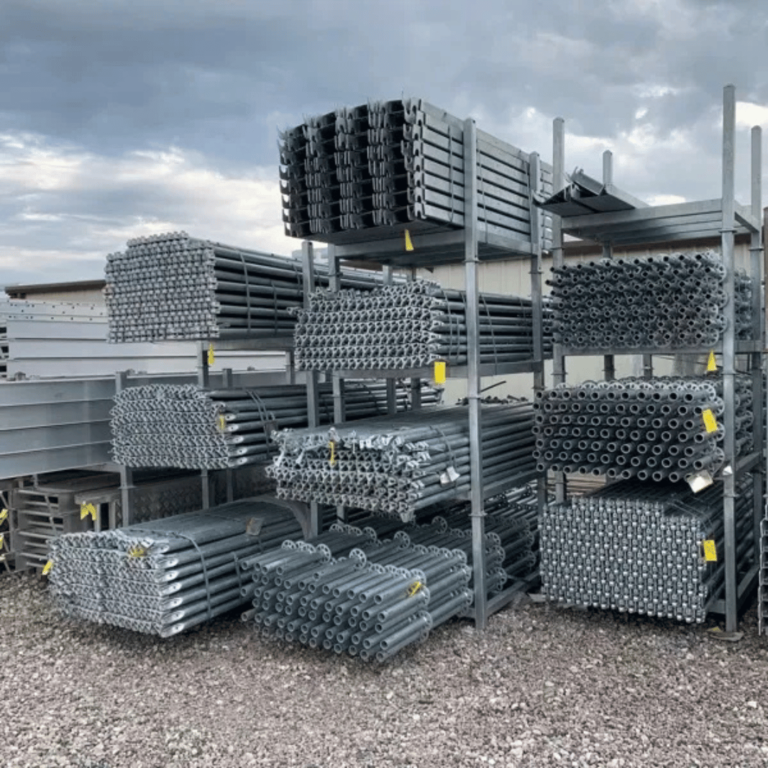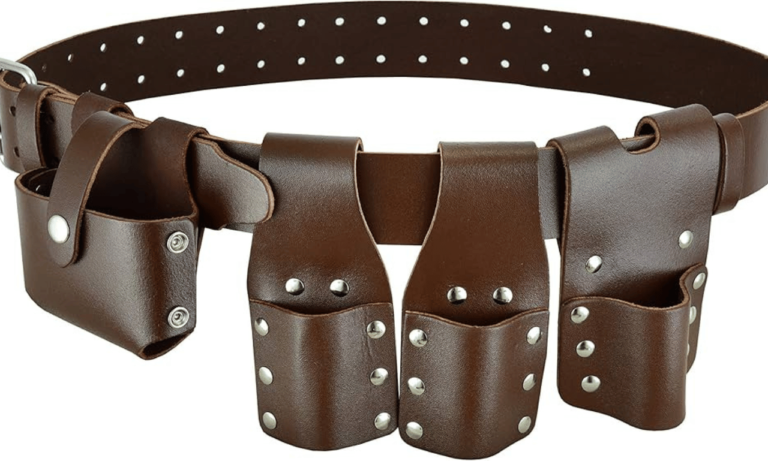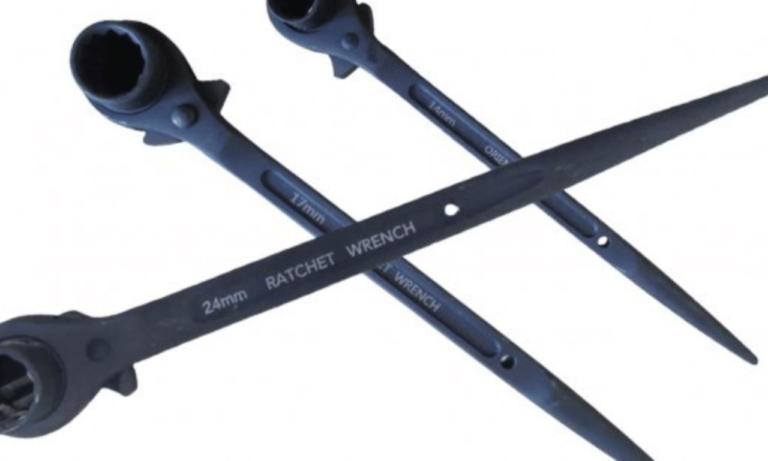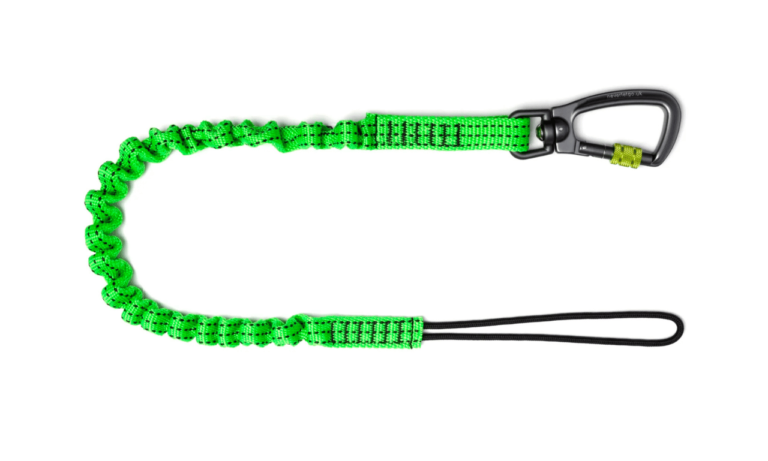Phone:
(+65)8319-0742
When it comes to scaffolding operations, having the right tools is crucial for efficiency and safety. One of the most important tools is the scaffold hammer. Scaffold hammers are specifically designed for use in scaffolding structures, allowing workers to easily tighten or loosen bolts and couplers. They come in various types, including the original Toffee hammer, the Estwing Roofers type, and the Scaffold Hammer with Nail Puller. These hammers are designed to be durable and reliable, with some featuring ergonomic rubber grips for enhanced comfort and grip. By choosing the best scaffold hammer for your construction needs, you can elevate your scaffolding work and improve both efficiency and safety.
Key Takeaways:
- Scaffold hammers are essential tools for efficient and safe scaffolding operations.
- Types of scaffold hammers include the Toffee hammer, Estwing Roofers hammer, and Scaffold Hammer with Nail Puller.
- Using a scaffold hammer provides secure connections and ergonomic grip for improved construction efficiency.
- When choosing a scaffold hammer, consider factors such as quality, durability, and ease of use.
- Other essential tools for scaffolding include scaffold wrenches, pliers, levels, safety harnesses, lanyards, scaffold spanners, tape measures, scaffold ratchets, and hard hats.
Types of Scaffold Hammers
Scaffold hammers are essential tools in construction projects, specifically designed for use in scaffolding structures. They come in different types, each offering unique features and benefits that cater to specific needs. Understanding the different types of scaffold hammers can help you choose the right one for your construction project.

Toffee Hammer:
The Toffee hammer is a popular choice among construction professionals. It is versatile and compact, making it perfect for small-scale scaffolding projects. The Toffee hammer is designed with efficiency in mind and offers ease of use, enabling workers to tighten or loosen bolts and couplers with precision.
Estwing Roofers Hammer:
The Estwing Roofers hammer is another widely used option for scaffolding work. It is specifically designed for roofing and scaffolding tasks, making it a reliable choice for construction professionals. With its solid steel construction and shock-resistant grip, the Estwing Roofers hammer delivers durability and longevity.
Scaffold Hammer with Nail Puller:
The Scaffold Hammer with Nail Puller is a versatile tool that goes beyond tightening or loosening bolts and couplers. In addition to its primary function, it features a convenient nail puller, making it a practical choice for construction projects. By combining multiple functionalities, this scaffold hammer enhances efficiency and convenience on the job site.
Choosing the right type of scaffold hammer depends on the specific requirements of your construction project. Whether you need versatility, durability, or added convenience, there is a scaffold hammer type that suits your needs.
Benefits of Using a Scaffold Hammer

Using a scaffold hammer offers several benefits for construction efficiency. Firstly, scaffold hammers are designed to provide secure connections, ensuring that all bolts and couplers are properly tightened or loosened. This helps to minimize the risk of accidents caused by loose or unstable scaffolding. Additionally, scaffold hammers are ergonomically designed with ergonomic rubber grip, providing enhanced comfort and grip for the user. This helps to reduce fatigue and improve productivity during scaffolding operations.
By utilizing a scaffold hammer, construction workers can work efficiently and safely, completing tasks with ease and precision.
The secure connections achieved with a scaffold hammer play a crucial role in maintaining the structural integrity of scaffolding. Secure connections ensure that the scaffolding remains stable and can withstand the weight and forces exerted on it. This not only enhances safety for the workers but also promotes efficient construction progress.
Enhancing Construction Efficiency
Construction efficiency is a key consideration in any project, and the use of scaffold hammers contributes to improved efficiency. The secure connections achieved with these hammers reduce the need for repeated adjustments and rework, saving time and effort. With secure connections, workers can focus on other tasks, leading to smoother workflow and increased overall productivity.
The ergonomic design of scaffold hammers with rubber grips provides a comfortable and firm hold, reducing hand fatigue during prolonged use. This allows workers to maintain their efficiency and accuracy throughout the day, even during physically demanding scaffolding operations.
Benefits at a Glance:
- Secure connections for stable and safe scaffolding structures
- Ergonomic rubber grip for enhanced comfort and reduced fatigue
- Improved construction efficiency through time-saving secure connections
- Enhanced worker productivity due to reduced hand fatigue
By understanding and utilizing the benefits of scaffold hammers, construction teams can optimize their efficiency, accuracy, and safety during scaffolding operations.
Factors to Consider When Choosing a Scaffold Hammer
When you’re in the market for a scaffold hammer, it’s important to consider a few key factors to ensure you make the right choice. By prioritizing quality, durability, and ease of use, you can find a scaffold hammer that meets your specific needs and enhances your construction efficiency.
Quality and Durability
One of the first things you should look for in a scaffold hammer is quality and durability. Opt for a hammer that is made from high-quality materials, such as forged steel or hardened alloy. These materials can withstand the rigorous demands of construction work and ensure that your scaffold hammer will withstand the test of time.
Ease of Use
The ease of use is another important factor to consider. When working on scaffolding structures, you’ll want a scaffold hammer that is lightweight and comfortable to handle for long periods of use. Look for hammers with ergonomic designs and handles that provide a secure and comfortable grip. This will help reduce fatigue and make your work more efficient.
Additional Features
Consider any additional features that might be beneficial to you. Some scaffold hammers come with a nail puller, which can be handy for removing nails or other fasteners. Others feature a rubber grip on the handle, providing extra comfort and reducing the risk of slippage during use.
By taking these factors into account, you can choose a scaffold hammer that not only meets your quality and durability requirements but also offers ease of use and any additional features that may enhance your construction efficiency.
| Factors to Consider | Quality | Durability | Ease of Use | Additional Features |
|---|---|---|---|---|
| Importance | High | High | High | Medium |
| Key Points | Look for high-quality materials that can withstand construction work. | Choose a durable hammer that will last over time. | Opt for a lightweight and comfortable hammer for extended use. | Consider additional features such as a nail puller or rubber grip. |
Other Essential Tools for Scaffolding

While the scaffold hammer is an essential tool for scaffolding, there are other tools that are equally important. These tools play a crucial role in enhancing the efficiency and safety of scaffolding operations. Here are some of the essential tools you should have in your arsenal:
Scaffold Wrenches
Scaffold wrenches are necessary for tightening or loosening bolts and couplers, ensuring secure connections throughout the scaffolding structure. These wrenches are designed to provide a strong grip and precise control, allowing you to make adjustments as needed.
Pliers
Pliers are versatile tools that come in handy for various tasks during scaffolding. They can be used for gripping wires and securing loose ends, facilitating efficient and precise work. Having a reliable pair of pliers in your toolkit is essential for quick and effective problem-solving.
Levels
Levels are vital for achieving accurate alignment and ensuring safe and stable scaffolding structures. By using a level, you can ensure that the scaffolding is straight and properly balanced, minimizing the risk of accidents. This tool is crucial for creating a sturdy and secure scaffolding setup.
Safety Harnesses and Lanyards
Safety harnesses and lanyards are critical for fall protection and anchorage during scaffolding work. They provide a secure attachment point for workers, preventing falls and minimizing the potential for serious injuries. These essential safety tools should always be used when working at heights.
Scaffold Spanners
Scaffold spanners are specifically designed for assembling and disassembling scaffolding structures. They are adjustable and provide a secure grip, enabling workers to efficiently tighten or loosen scaffold fittings. These spanners are crucial for maintaining the stability and integrity of the scaffolding system.
Tape Measures
Tape measures are essential tools for precise measurements in scaffolding projects. Accurate measurements ensure that the scaffolding components are correctly positioned and aligned. With a reliable tape measure, you can minimize errors and ensure the overall quality and safety of the scaffolding structure.
Scaffold Ratchets
Scaffold ratchets are used to secure the scaffolding in place, providing additional stability and preventing any movement or shifting. These tools feature a ratchet mechanism that allows for easy tightening and releasing of scaffolding components. Scaffold ratchets are essential for maintaining the structural integrity and safety of the scaffolding system.
Hard Hat
A hard hat is an essential piece of personal protective equipment (PPE) for scaffolding work. It provides protection for the head from falling objects and potential impacts. Wearing a hard hat is crucial to prevent head injuries and ensure the safety of workers on the scaffolding.
Having these essential tools readily available and utilizing them correctly in your scaffolding operations will greatly enhance both efficiency and safety on the job.
Ensuring Scaffold Safety

Safety is paramount in scaffolding operations. To maintain a secure working environment for your team, it is crucial to prioritize scaffold safety by implementing the following measures:
- Regular Inspections: Conduct thorough inspections before and after every use to identify potential hazards or defects. This proactive approach ensures that any issues are addressed promptly, reducing the risk of accidents.
- Personal Protective Equipment (PPE): All workers should wear the appropriate personal protective equipment, including helmets, gloves, boots, and harnesses. This equipment offers vital protection against potential injuries and falls.
- Adherence to Load Capacity and Height Limits: It is essential to strictly adhere to load capacity and height limits specified by manufacturers and local regulations. Overloading or overcrowding scaffolding can lead to structural instability and accidents.
- Proper Organization and Maintenance: Keep the scaffolding clean, organized, and free from debris to prevent slips, trips, and other accidents. Regularly inspect the scaffolding for any loose components and tighten them as necessary.
- Compliance with Local Regulations: Familiarize yourself with the local laws and regulations regarding scaffolding. Obtain the required permits and licenses before commencing any scaffolding work. Following these regulations ensures legal compliance and promotes safety.
By incorporating these safety measures and emphasizing scaffold safety, you can create a secure work environment that minimizes the risk of accidents and protects the well-being of your team.
Personal Protective Equipment for Scaffold Safety
| PPE Item | Description |
|---|---|
| Helmets | Protect the head from falling objects and head injuries. |
| Gloves | Provide hand protection against cuts, abrasions, and other hazards. |
| Boots | Offer foot protection with reinforced soles and slip-resistant features. |
| Harnesses | Prevent falls by securing workers to the scaffolding structure. |
Maintaining Scaffold Tools and Equipment
Regular maintenance of scaffold tools and equipment is crucial for ensuring their longevity and functionality. By implementing a proper maintenance routine, you can extend the lifespan of your tools and equipment, enhance performance, and maintain a safe working environment.
Inspection
Inspecting your scaffold tools regularly is essential to identify any signs of damage, wear and tear, or potential hazards. Pay close attention to the integrity of the tools, such as cracks, deformities, or loose parts. If any issues are discovered, take immediate action by repairing or replacing the tools to prevent accidents and maintain optimal functionality.
Cleaning
Clean your scaffold tools after each use to remove dirt, debris, and other contaminants that can affect their performance. Use a damp cloth or brush to wipe away any residue, paying extra attention to the moving parts and hard-to-reach areas. This reduces the risk of corrosion, maintains proper operation, and ensures the longevity of your tools.
Lubrication
Lubricating the moving parts of your scaffold tools is vital for ensuring smooth operation and reducing friction. Apply a suitable lubricant to the hinges, joints, and other areas that require movement. This helps prevent rust and corrosion, enhances maneuverability, and extends the lifespan of your tools.
Replacement
Regularly assess the condition of your scaffold tools and equipment to determine if any items need to be replaced. Tools that are damaged beyond repair or no longer meet safety standards should be promptly replaced to prevent accidents and maintain the efficiency of your work. Prioritizing the safety and functionality of your tools is crucial for successful scaffolding operations.
In conclusion, maintaining scaffold tools and equipment through regular inspection, cleaning, lubrication, and timely replacement is vital for their longevity and functionality on the job. By investing time and effort into proper maintenance practices, you can ensure the safety of your workers, enhance performance, and achieve successful construction projects.
Conclusion
In conclusion, the scaffold hammer plays a critical role in enhancing construction efficiency and ensuring safety in scaffolding operations. By selecting the appropriate scaffold hammer and utilizing other essential tools and equipment, construction workers can significantly improve productivity and create a secure working environment for themselves and their team.
To promote safety, it is crucial to adhere to proper regulations, conduct regular inspections, and employ personal protective equipment. Adhering to load capacities and following local regulations are essential to prevent overloading or overcrowding of scaffolding structures.
Furthermore, proper maintenance of scaffold tools and equipment is vital for their optimal performance and durability. Regular inspections, cleaning, lubrication, and timely replacement of damaged tools are necessary to ensure their longevity.
By prioritizing efficiency, safety, and scaffold maintenance, construction professionals can elevate their scaffolding work and achieve successful projects while minimizing risks and ensuring a safe working environment.
FAQ
What is a scaffold hammer?
A scaffold hammer is a tool specifically designed for use in scaffolding structures. It is used to tighten or loosen bolts and couplers.
What are the different types of scaffold hammers?
There are several types of scaffold hammers, including the Toffee hammer, Estwing Roofers hammer, and Scaffold Hammer with Nail Puller.
What are the benefits of using a scaffold hammer?
Using a scaffold hammer provides secure connections, ergonomic rubber grip, and improved construction efficiency.
What factors should I consider when choosing a scaffold hammer?
When choosing a scaffold hammer, consider factors such as quality, durability, and ease of use.
Besides a scaffold hammer, what other tools are essential for scaffolding?
Other essential tools for scaffolding include scaffold wrenches, pliers, levels, safety harnesses, lanyards, scaffold spanners, tape measures, scaffold ratchets, and hard hats.
How can I ensure scaffold safety?
Scaffold safety can be ensured by conducting regular inspections, using personal protective equipment, adhering to load capacity and local regulations, and keeping the scaffolding clean and organized.
How should I maintain scaffold tools and equipment?
Scaffold tools and equipment should be regularly inspected for damage, cleaned after each use, lubricated, and replaced if damaged beyond repair or no longer meeting safety standards.


